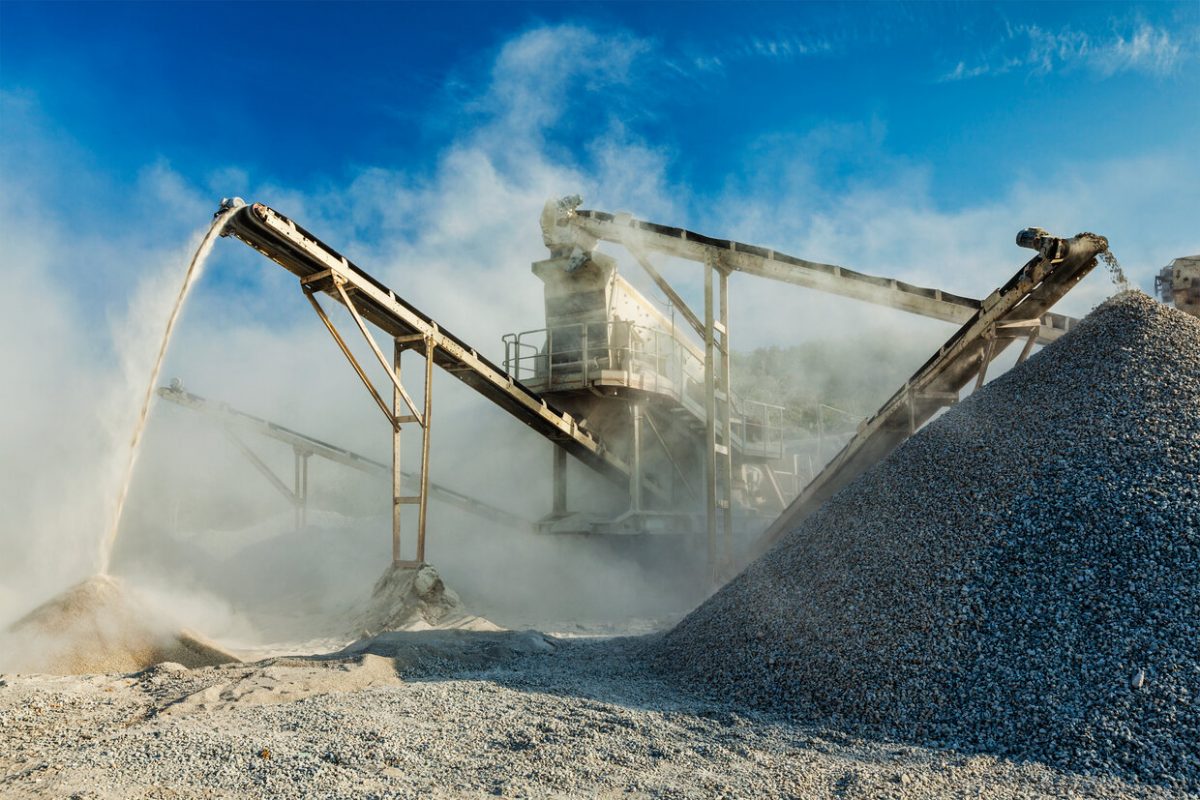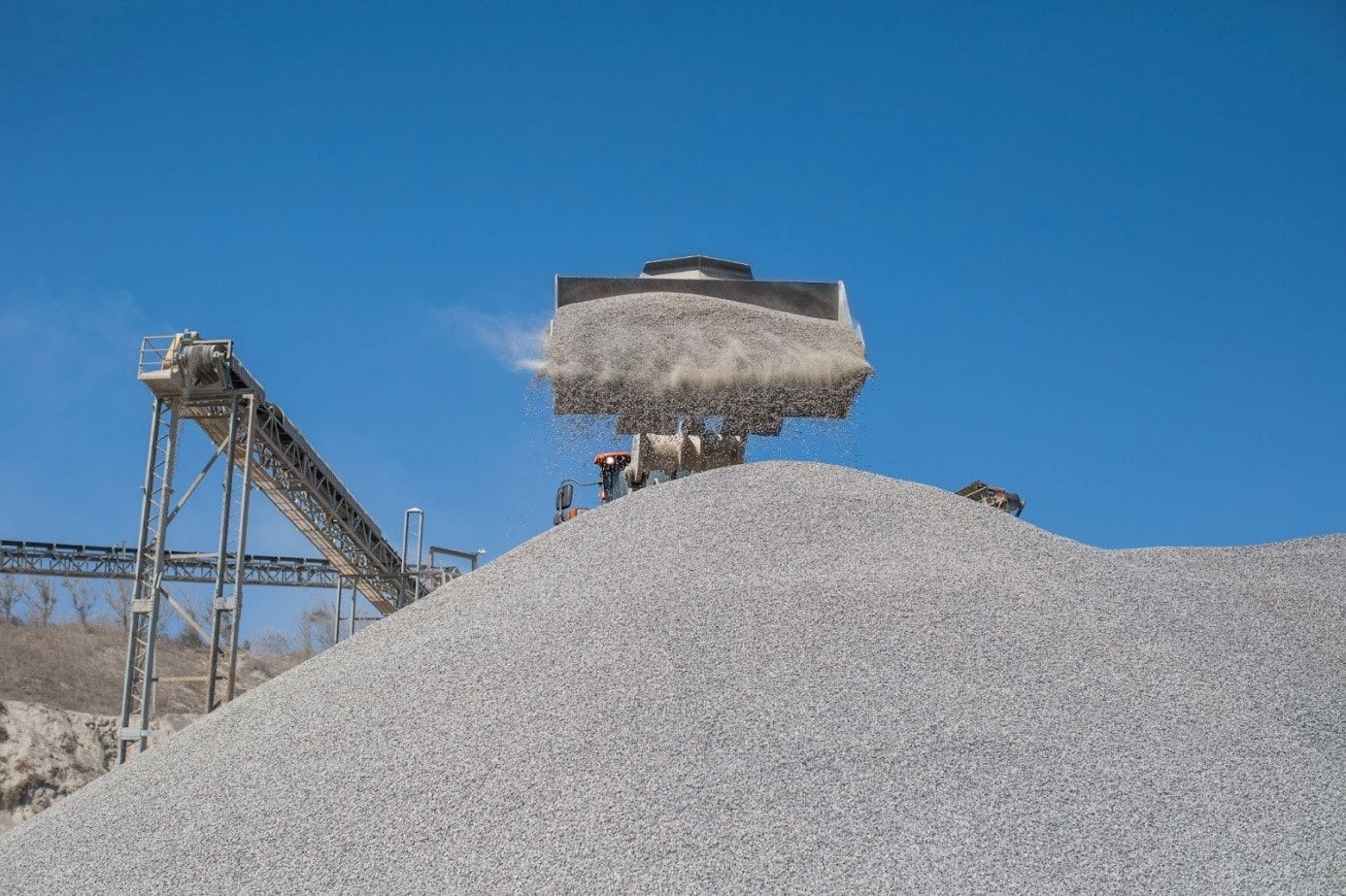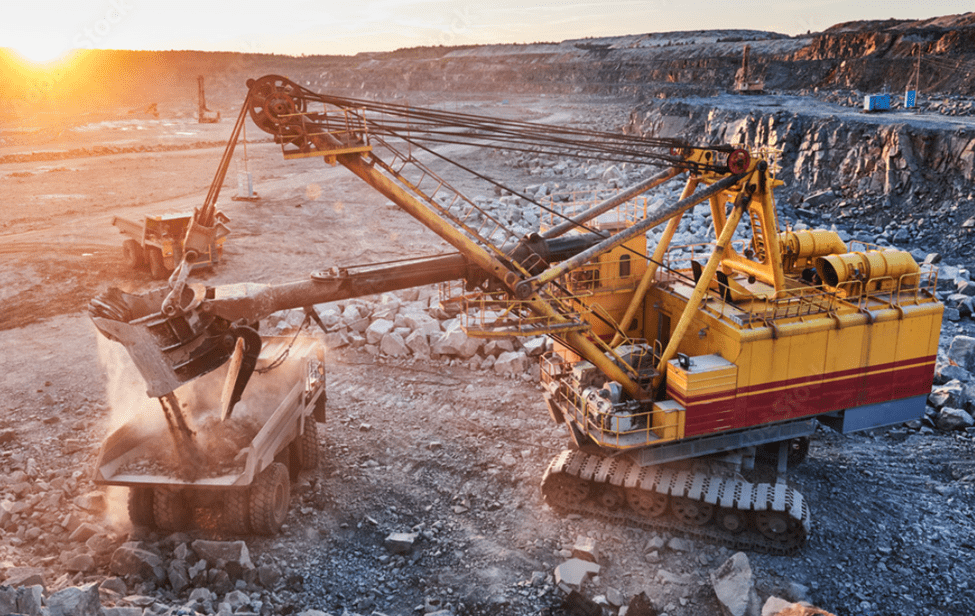Operations related to the extraction of mineral ore such as blasting, transportation, grinding, and crushing can release large amounts of dust into the atmosphere. This is particularly true in a crusher plant where the demolition of stones, an operation that generates vast amounts of dust, is a daily procedure.
Dust can generate a series of problems for industrial operations. Not only can dust cause health problems, but it can also reduce the productivity of a mining site by limiting visibility and increasing wear-and-tear on equipment.
What is crusher dust?
Crusher dust is a type of fine dust, which contains very small 0-5mm aggregate particles as well as sand. It is formed as a by-product from mining operations and is often recycled for different applications such as construction.
Whenever rocks are crushed by rock crushing equipment, tiny PM 1, PM 2.5 and PM 10 dust particles spread through the air. This by-product of rock crushing may cause harm to the health of workers and nearby communities and damage the durability of equipment, leading to bearing failure, lubricant contamination, and increased risk of fire autoignition.
Particles coming from high compressive strength rocks (hardness), with a higher mosh index and angularity (sharp edges) cause the greatest damages, such as silica, quartz and diamond dust.
Health effects of crystalline silica
Silicon dioxide, also known as silica, is a chemical compound commonly found in quartz. Silica normally presents itself in a crystallized form, and it is a component of sand in various parts of the world. Industrial uses of silica include the manufacturing of microelectronics and structural materials. Some living organisms, such as grass, use silica as a defense mechanism to drive off herbivores (source).
Breathing dust particles from crystalline silica can have scathing effects on a person’s health. Airborne dust can stay lodged inside the lungs, causing inflammation and scarring on lung tissue. This condition is known as silicosis and can result in permanent lung damage or even the death of the patient.
Chronic silicosis can occur after periodic exposure to silica dust, but exposure to large amounts of dust can drastically hasten the development of the condition. Even after exposure to dust is discontinued, silica dust particles can remain in the lungs for prolonged periods of time.
Symptoms of silicosis include:
- Cough
- Fatigue
- Shortness of breath
- Chest pain
Silica dust from stone crushing can be a major factor in a person developing silicosis, leading professionals to catalog it as an occupational lung disease. Complications from developing silicosis can also cause patients to develop more serious diseases.
Examples of other serious diseases caused by silica and other airborne dust exposure include:
- Tuberculosis
- Lung Cancer
- Chronic Obstructive Pulmonary Disease (COPD)
- Kidney Disease
- Rheumatoid arthritis
- Systemic lupus erythematosus
- Systemic sclerosis (scleroderma)
How do you control crusher dust?
The most efficient method of controlling dust generated in a crushing plant is the use of dust suppression systems within a methodology and understanding of your process, mechanical stressors, enclosures, weather conditions and operational context.
First, you should always try to avoid/eliminate dust generating activities as much as possible, by choosing and maintaining equipment that have lower dust emissions, proper enclosures and filters systems that keep the dust within the process and avoid dust emissions. Keeping the house in order can reduce dust emission by up to 50%.
Secondly, a dust control specialist can recommend to you a combination of engineered dust control solutions such as dry fog, fine mist, dust collectors, improvements of feeding, discharge and transfer points and enclosures.
Finally, you need to put in place control loops taking into account dust concentrations, visibility indicators, throughput, and weather conditions such as wind speed, wind direction and air pressure, moisture and temperature changes that lead to air stagnation conditions. This is key to incorporate, assess and improve control measures and ensure you run a continuous dust controlled operation at your site as well as to make sure your personnel are wearing the right personal protective equipment in terms of respiratory protection and are not exposed to health risk due to uncontrolled dust levels along their work schedules.
For mining industrial groups, dust suppression ensures the safety of the labor force and the productivity of operations, so investing in the best dust suppression solutions, monitoring solutions and continuous improving systems is a major priority for mining companies.
DMS-FOG
DMS-FOG is an effective dust control solution that uses smart dry fog and fine mist systems. Dust suppression systems in DMS-FOG consist of stainless nozzles that can produce either fog or mist. Using microscopic amounts of water, the system covers the source of dust and prevents dust particles from going airborne. Emissions of dust can also be avoided by applying dust control additives to the water suppression systems.
The system can be equipped with specific stainless nozzles depending on the purpose it is being used for. This increases the durability of the hardware and therefore reduces the amount of time and resources needed for maintenance. Furthermore, controlled temperature technology implemented by DMS-FOG guarantees its effectiveness regardless of weather conditions.
DMS-FOG is the result of 20 years of dust capture method development, making it an efficient and resource-effective solution. By using DMS-FOG in tandem with other dust control solutions like DMS-TDS additives, the efficiency of dust suppression can be drastically enhanced while also saving on water and operational costs.
The on-site information display and control capabilities of DMS-FOG can be integrated into ABCDust’s DMS-ONE platform. With the use of the DMS-ONE system, the capabilities of DMS-FOG can be monitored and optimized. The control system has many automation features, which include timing controls using input and output sensors and extreme dust particle monitoring to optimize dust suppression and resource use.
The valve control systems are automatic and control the flow of air and water. Integrated time relays and auxiliary contacts (PLC) are implemented for a remote start alongside pilot lights, ball water valves, and manual shutoff valves. The system is delivered in an IP66 enclosure and is water and dust-resistant.
Increase your dust suppression capacity and water savings
DMS-TDS
DMS-TDS is a non-ionic chemical additive that can help control dust by restructuring water particles. This substance is designed using a proprietary mixture of non-ionic surfactants, alcohols, and nano-polymers. The resulting mixture of these components is highly surfactant, efficiently reducing the tension between H2O particles and other materials.
The main attributes and characteristics of DMS-TDS are:
- Minimizing dust in the atmosphere, improving air quality and visibility
- Drastically increasing the resource effectiveness of water
- Being a highly concentrated solution, which facilitates its transport and storage
- Resistance to acidic, alkaline, and salt water
- Having a non-ionic, non-toxic, and non-corrosive chemical composition
- UV resistance
Water particles modified by DMS-TDS are able to capture and absorb fugitive dust particles, effectively minimizing dust in the atmosphere. DMS-TDS solutions are often used as dust suppression plant aggregates for cargo fronts, conveyor belts, and other structures at risk of dust collection.
A major advantage of implementing DMS-TDS is the resource-effective use of water. Using DMS-TDS to suppress dust can reduce water needs by up to 90%. The chemical is applied by mixing it with water and spread using water cannons or sprinkler systems. The specific dose of DMS-TDS used is determined by the type of dust being suppressed. It is possible to use a DMS-TDS solution together with the dust suppression systems of DMS-FOG, creating an extremely efficient integrated system.
Extreme dust level monitoring DMS-EXTREME
ABCDust can monitor airborne dust levels by using state-of-the-art measurement technologies. Alongside solid methodologies supported by years of research and development, this technology can be used to assess dust levels in the atmosphere under different environmental conditions. Using this data, you can determine which suppression method can best ensure mine safety while guaranteeing competitive mining operations.
The extreme dust levels monitoring technology implemented by ABCDust includes the following features:
- Perpetual measurement of dust levels of up to 4,000 mg/m3 for different PMs.
- Weight analysis of samples to measure mg/m3 dust emissions and characterize them.
- Creating predictive and analytic models of dust emissions based on different factors including wind, air pressure, temperature, air inversion, humidity, production levels, type of materials involved, and more.
- Recommendation of the most effective servicing of dust extraction, including alerting about pending maintenance.
- Conducting evaluation before and after implementation of dust suppression solutions to measure their success.
- Producing emission reports before and after the use of dust suppression methods.
Monitor extreme levels of particulate matter
DMS-ONE Dust management and continuous improvement system
Many mining companies leverage DMS-ONE to optimize crusher dust control programs. The platform integrates sensors for dust control, weather conditions, throughput, visibility, and moisture to optimize dust suppression and crusher maintenance costs.
DMS-ONE facilitates prevent and mitigate extreme dust concentrations and improves your crusher maintenance, avoiding risk of fires and advising the proper workers health and safety measures be implemented.
Smart dust control and soil stabilization
ABCDust distinguishes itself by providing an integrated solution for dust control and monitoring systems in any mining environment. Backed by application, monitoring, and control systems, ABCDust can deliver effective dust control measures and soil stabilization aggregates. Together with constant analysis of production indicators, ABCDust’s dust suppression systems offer an efficient, safe, and friendly work environment.
Partners of ABCDust can expect the following services when working in a crusher plant:
- Monitoring with the use of state-of-the-art dust suppression methodologies
- A field visit to collect operation-critical information
- Development of a situation analysis of the crusher plant
- Proposal of different dust suppression strategies
- Dust measurements before and after operations have been developed
- Setting strategic guidelines for an implementation plan with continuous improvement as its central focus.





